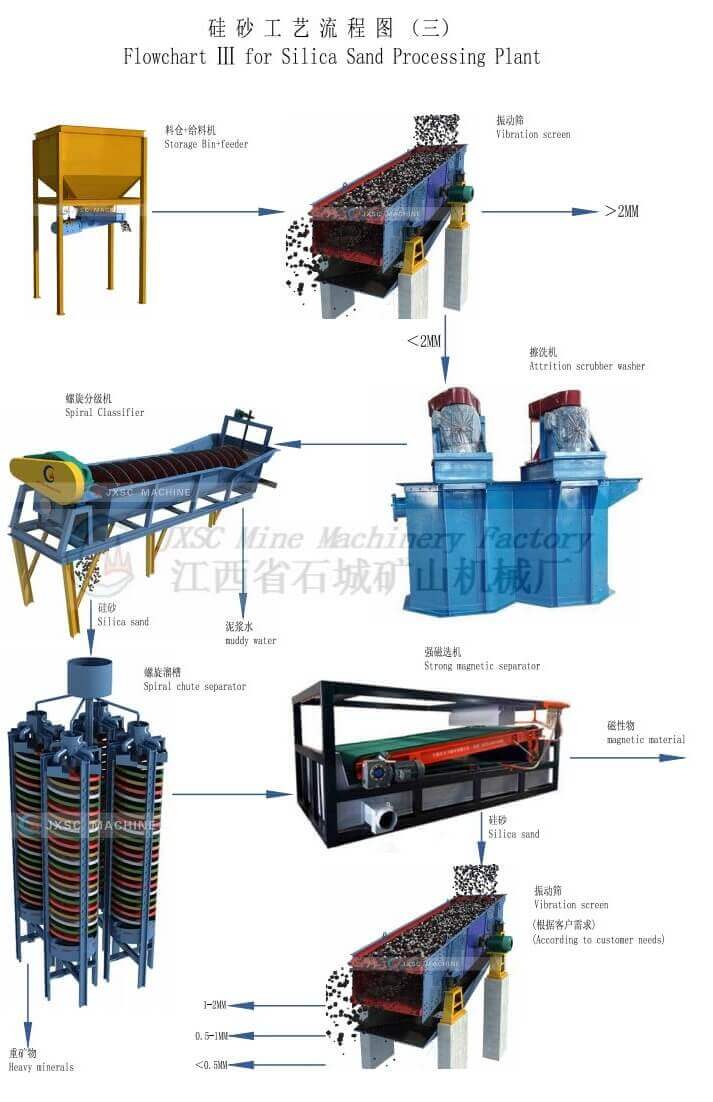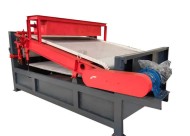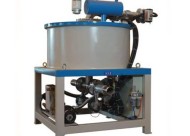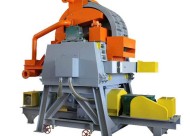Mineral processing methods are mainly divided into two categories, namely physical mineral processing and chemical mineral processing.
Physical Mineral Processing
Physical beneficiation includes magnetic separation, gravity separation, electrostatic beneficiation, friction beneficiation, particle size beneficiation, shape beneficiation, corona beneficiation and manual beneficiation.
Chemical Mineral Processing
Chemical mineral processing includes flotation method (physical and chemical mineral processing is the actual flotation), calcination method, leaching method (bacterial leaching and reagent leaching), mixed mercury method and cyanidation method.
There are three commonly used mineral processing methods: flotation, magnetic separation and gravity separation.
Flotation
Flotation is a mineral processing method which uses the different physical and chemical properties of mineral surface to separate minerals. Foam flotation is widely used in industry. It is characterized by selectively attaching minerals to the air bubbles in the pulp and then floating up to the surface of the ore slurry to achieve the separation of useful minerals from gangue.
Before flotation, the ore should be grinded to the size required by flotation, so that the useful minerals can basically achieve monomer dissociation for separation. And adding flotation reagent. During flotation, air is introduced into the pulp to form a large number of bubbles. Therefore, particles that are not easily wetted by water(commonly known as hydrophobic minerals), they are attached to the bubbles and forming a mineralized foam layer along the bubble to the surface of the slurry. The particles that are easily wetted by water(commonly known as hydrophilic minerals), they cannot adhere to the bubbles and remain in the pulp. The purpose of separation is to discharge the mineralized foam.
Direct Flotation & Reverse Flotation
In general, the useful minerals are floated into the foam products, leaving gangue minerals in the pulp. This flotation is usually called positive flotation. But sometimes gangue minerals float into foam products, leaving useful minerals in the pulp, which is called reverse flotation.
Preferential Flotation & Mixed Flotation
If the ore contains two or more kinds of useful minerals, there are two flotation methods. One is called preferential flotation, the useful minerals are selected into a single concentrate one by one; The other is called mixed flotation, the useful minerals are selected as mixed concentrate at the same time, and then the useful minerals in the mixed concentrate are separated one by one.
Application
Flotation has a wide range of applications, most of the ores can be treated by flotation. More than 90% of nonferrous metal (copper, lead, zinc, etc.) ores are separated by flotation.
Advantages and Disadvantages
Flotation method has high separation efficiency. It can effectively separate low-grade ore into high-grade concentrate, especially for the ore with fine-grained distribution and complex composition. When the flotation method is used, it can often achieve good separation effect. But the flotation method must use flotation reagent, so its mineral processing cost is generally higher than gravity separation method and magnetic separation method.
To view our flotation equipment.

Magnetic Separation
Minerals are divided into strong magnetic minerals, weak magnetic minerals and non-magnetic minerals. Magnetic separation is a mineral separation method in heterogeneous magnetic field according to the difference of mineral magnetism in ore. Magnetic separation is mainly used for magnetic oxide minerals of ferrous minerals, such as magnetite, V-Ti magnetite, hematite and ilmenite, and also for pyrrhotite beneficiation.
Magnetic separation is the concentration of ilmenite. It uses different permeability of various minerals to make them pass through a magnetic field. Because different minerals react to magnetic field differently, minerals with high permeability are sucked up by disk, and then they fall off. After collecting them through aggregate funnel, the low permeability will not be absorbed, and the belt left in the material or rotating can be separated as tailings.
To view our magnetic separator.
Gravity Separation
Gravity separation, also known as gravity dressing. It refers to the mineral processing method that makes use of the difference of relative density, particle size and shape of the separated mineral particles and the difference of movement speed and direction in the medium (water, air or other liquid with relatively high density) to separate them.
Application
Compared with other mineral processing methods, gravity separation has the advantages of large processing capacity, wide range of particle size, simple equipment structure, no consumption of valuable production materials, low operation cost and no pollution, so it is widely used in the beneficiation of tungsten and tin ores. It is also widely used in the separation of ferrous metals (iron, manganese, chromium), rare metals (tantalum, niobium, thorium, zirconium, titanium, etc.) and precious metal ores.
Gravity separation is also the main method of coal processing. Gravity separation is also used to separate non-metallic minerals such as pyrite, apatite, diamond and asbestos from coal measures. For those nonferrous metal ores (copper, lead, zinc, etc.) which are mainly treated by flotation, heavy medium mineral processing can also be used to remove coarse gangue or surrounding rock in advance to achieve preliminary enrichment. Classification and dehydration of gravity separation are indispensable in almost all concentrators.
Advantage
- The production cost is low.
- The particle size range of the material can be treated is wide, the coarse can reach hundreds of mm, and the fine can reach 0.02mm.
- It has less pollution to the environment and the product is easy to dehydrate. But for less than 0.1 mm ore and 0.5 mm coal, the beneficiation efficiency and equipment processing capacity are low.
To view our gravity separator.
LATEST PRODUCTS
Plate Magnetic Separator
【Capacity】8-35 t/h 【Power】1.5-3 kW 【Applic…
Slurry Magnetic Separator
【Capacity】10-100 m3/h 【Feeding Material Densi…
Vertical Ring High Gradient Magnetic Separator
【Capacity】0.01-150 TPH【Feeding Size】0-1.2…









